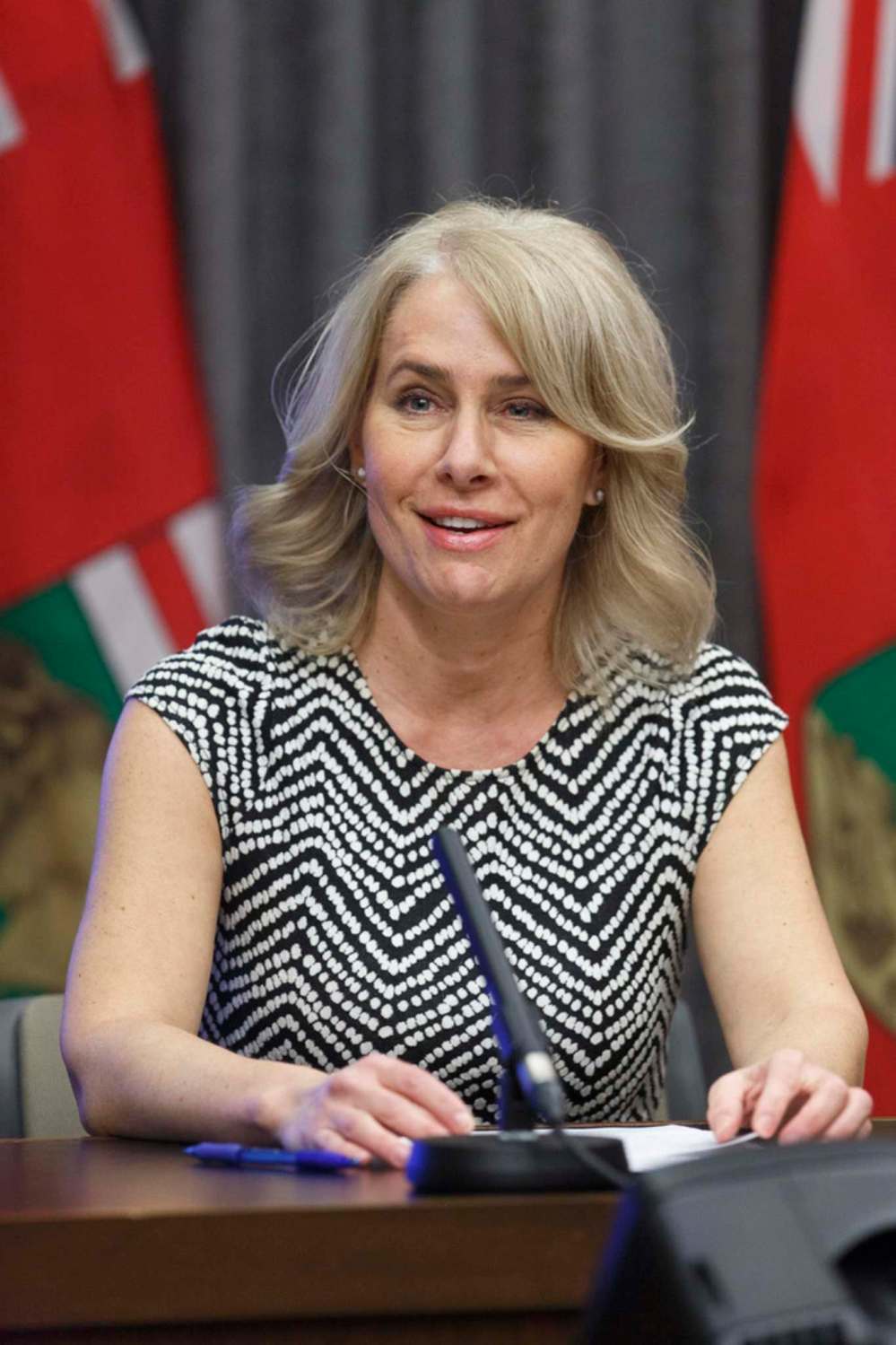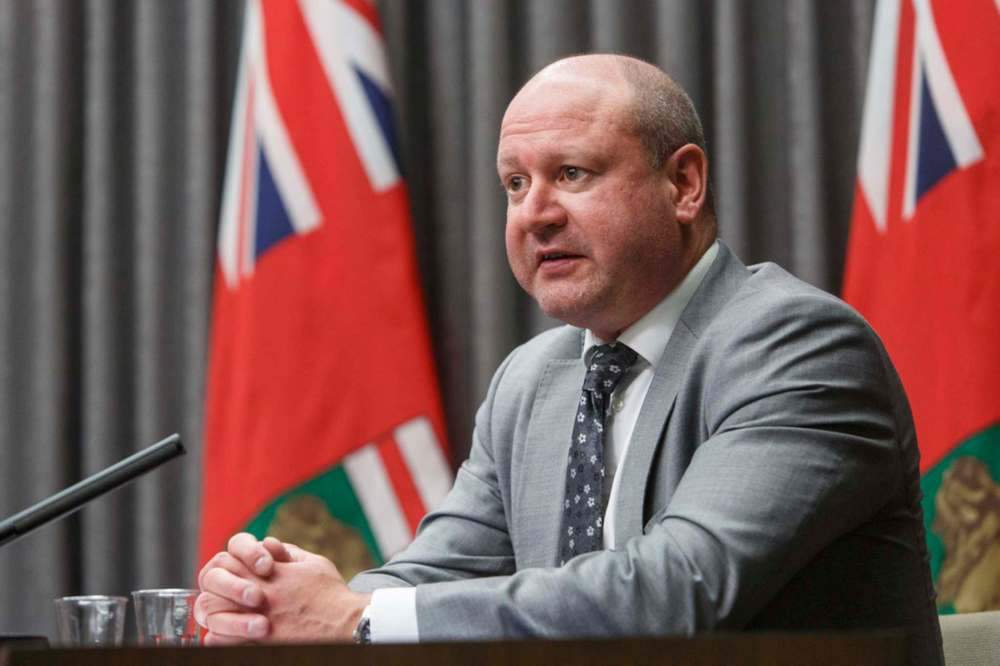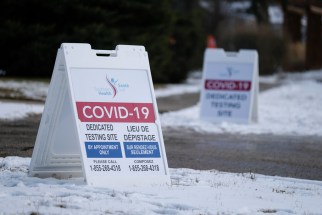Health system on the brink due to high daily COVID counts Modelling shows Manitoba has avoided worst-case scenario, but has long way to go
Read this article for free:
or
Already have an account? Log in here »
To continue reading, please subscribe:
Monthly Digital Subscription
$0 for the first 4 weeks*
- Enjoy unlimited reading on winnipegfreepress.com
- Read the E-Edition, our digital replica newspaper
- Access News Break, our award-winning app
- Play interactive puzzles
*No charge for 4 weeks then price increases to the regular rate of $19.00 plus GST every four weeks. Offer available to new and qualified returning subscribers only. Cancel any time.
Monthly Digital Subscription
$4.75/week*
- Enjoy unlimited reading on winnipegfreepress.com
- Read the E-Edition, our digital replica newspaper
- Access News Break, our award-winning app
- Play interactive puzzles
*Billed as $19 plus GST every four weeks. Cancel any time.
To continue reading, please subscribe:
Add Free Press access to your Brandon Sun subscription for only an additional
$1 for the first 4 weeks*
*Your next subscription payment will increase by $1.00 and you will be charged $16.99 plus GST for four weeks. After four weeks, your payment will increase to $23.99 plus GST every four weeks.
Read unlimited articles for free today:
or
Already have an account? Log in here »
Hey there, time traveller!
This article was published 04/12/2020 (1836 days ago), so information in it may no longer be current.
Manitobans’ efforts to regain control of the pandemic have averted the worst of COVID-19 but are perilously close to being squandered as hundreds of new daily infections continue to push the health system toward a catastrophe.
On Friday, chief provincial public health officer Dr. Brent Roussin and Shared Health chief nursing officer Lanette Siragusa released new pandemic modelling — the first time such projections have been shared since the spring.

“As bad as it feels, it could be worse and I think we’re moving in the right direction,” Siragusa said Friday. “We’re just on the precipice where we don’t want to lose the benefits that we’ve gained and we want to get us to a more stable place.”
Since mid-October, the number of new daily COVID-19 infections has been following the “worst case,” or extreme, scenario.
Despite the incremental addition of public health restrictions in October, and the implementation of critical-level restrictions in Winnipeg on Nov. 2, case numbers continued to rise as if there were few restrictions in place and poor public compliance, Roussin said.
Had public health not implemented severe restrictions — called a circuit-breaker — on Nov. 12, Roussin said the daily case count was projected to hit 1,050 by the end of the December.
“These case counts over the past month have put us on a collision course to quickly reach the limits of what our health-care system can support.”
– Lanette Siragusa
“We need both high compliance and strong public health restrictions in place,” Roussin said. “When these conditions are met, interventions are shown to be successful, and we can expect the current restrictions to follow that same pattern with widespread public buy-in.
“The public has a significant role in determining how successful these measures will be.”
While there are early indications that restrictions are keeping case numbers from escalating — with 320 new infections reported on Friday — Roussin could not say with certainty whether the upward momentum has stopped.
“Test positivity rates still remain high, and for that reason, it’s too early to say we are changing the trajectory,” the top doctor said.

“The public has a significant role in determining how successful these measures will be.”
– Dr. Brent Roussin
The projections show the number of daily new infections the province has reported recently straddles the low end of the extreme scenario and the high end of the severe scenario, which estimates more than 500 cases a day by the end of December.
It’s a delicate situation as long as test positivity rates remain in the double digits, people continue to get infected while out in the community and hundreds of cases go undiagnosed.
While Roussin did not rule out imposing even tougher public health measures when the current orders expire Dec. 11, he did say it’s likely those orders will be renewed.
“We definitely need a high adherence to those restrictions as well as public health guidance, or we’ll start tracking on that worst-case scenario again,” the top doctor said.
Sorting the pandemic scenarios
Posted:
Imagine playing four versions of open-ended video game SimCity at once, with 1.4 million different characters and 165 different parameters.
Meanwhile, the health-care system continues to be under a serious strain, which is expected to become worse as the month goes on.
“These are very high rates and put our province at significant risk at catastrophic pressure on our health-care system,” Roussin said.
Statistics show that for every 48 Manitobans who test positive for COVID-19, three are hospitalized and one dies.
Based on current projections, Siragusa said COVID-19 patients could occupy half of the province’s 173 available critical care beds by the end of the month. By comparison, on Friday, COVID-19 patients accounted for a little less than half of the ICU admissions.
“As we (saw in) November, as this virus enters the more vulnerable population, its impact can quickly escalate the number of hospitalizations required,” Siragusa said. “While some patients may stay in the hospital for a few days, others may require weeks of care, and only in (the) intensive care unit.”
Siragusa said the province is ramping up its preparations for low-acuity overflow sites as COVID-19 patients are projected to occupy as many as half of all available clinical beds by mid- to late-December, should the daily number of infections continue to remain high.
“These case counts over the past month have put us on a collision course to quickly reach the limits of what our health-care system can support,” Siragusa said.

Stephen Hoption Cann, a clinical professor in the School of Population & Public Health at the University of British Columbia, said it will be critical for Manitobans to buckle down and reduce the number of people who are infected, to avoid a huge spike in cases in 2021.
“Are people going to be compliant in keeping away from large or even moderately sized indoor gatherings?” Hoption Cann said. “A lot of the numbers are not so much that the right restrictions aren’t in place, it’s really some people not being compliant and it spreads quite easily in that setting.”
Hoption Cann said with test-positivity rates hovering around 13 per cent, many Manitobans could be unknowingly spreading the virus, making deviation from the pandemic restrictions even more risky.
Too little, or too late?
The epidemic in Manitoba has been following the “extreme,” worst case scenario since early October, modelling released by the province indicates.
As early as Oct. 8, new COVID-19 infections started to grow at a rapid rate that mirrored a scenario in which minimal public health restrictions were in effect and Manitobans were largely non-compliant.
The epidemic in Manitoba has been following the “extreme,” worst case scenario since early October, modelling released by the province indicates.
As early as Oct. 8, new COVID-19 infections started to grow at a rapid rate that mirrored a scenario in which minimal public health restrictions were in effect and Manitobans were largely non-compliant.
By the end of October, daily case counts were jumping beyond the projected range of possibilities in the extreme scenario. During that time, the province took an incremental approach in adding restrictions that would curb the spread of the disease.
On Sept. 28, the Winnipeg metropolitan region was placed under orange-restricted on the pandemic response system. Masks were mandated indoors and group sizes were limited to 10 persons. On Oct. 7, restaurants and bars were ordered to stop serving liquor by 10 p.m.
On Oct. 10, over the Thanksgiving long weekend, reported infections jumped above the number of cases the model projected in the extreme scenario, and within weeks, case counts were trending upward. On Oct. 19, the province ordered gathering sizes down to five people in indoor public places, closed beverage rooms and capped table sizes at restaurants, among other measures.
Again, by Oct. 29, cases were exceeding projected infections in the worst-case scenario. Winnipeg was placed under critical-level restrictions on Nov. 2 followed by the entire province on Nov. 12.
Asked why tougher restrictions weren’t implemented sooner, chief provincial public health officer Dr. Brent Roussin said public health had committed to using a targeted approach with the least restrictive means necessary to control the epidemic.
“We tried those various orange restrictions to try to bring down those numbers, but you could see that we didn’t get the buy-in from it,” Roussin said. “We couldn’t predict at that time that we wouldn’t get buy-in with the orange restrictions.
“We have to put them in and see the results,” he said.
— Danielle Da Silva
However, additional data-sharing by public health on where Manitobans are becoming infected, and what behaviours increase the risk of illness, could result in more people following the rules.
“There’s always going to be those cases you can’t trace, but it’s useful data to inform people how they can prevent further spread of the disease and to be more cautious,” Hoption Cann said. “It’s a bit of peer pressure in that it becomes inappropriate to do certain things because you see more and more people complying.”
NDP Leader Wab Kinew said Friday he encouraged Manitoba’s top doctor to share the modelling scenarios in a more timely way, but the Pallister government would not allow it.
“This is a political decision as to what information is going to be released,” Kinew said. “We’ve seen in other provinces they do release these forecasts and, typically, there are politicians standing at these forecasts when they release them.”
Seeing the different COVID-19 models would inspire public confidence in the health system – that officials “have a handle on all the different scenarios that may come to pass,” he said. “It also would be a reminder to people why we’re asked to abide by these restrictions,” said Kinew.
“I think transparency builds trust among the public, and we need that buy-in.
“When we conceal information, that’s when the fringe voices jump into that vacuum.”
— with files from Carol Sanders
danielle.dasilva@freepress.mb.ca

Our newsroom depends on a growing audience of readers to power our journalism. If you are not a paid reader, please consider becoming a subscriber.
Our newsroom depends on its audience of readers to power our journalism. Thank you for your support.
History
Updated on Friday, December 4, 2020 7:22 PM CST: Adds fact box
Updated on Friday, December 4, 2020 8:18 PM CST: Adds sidebar in second factbox
Updated on Friday, December 4, 2020 8:29 PM CST: Adds pdf







